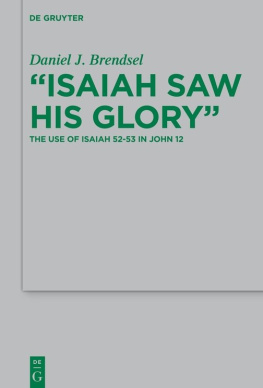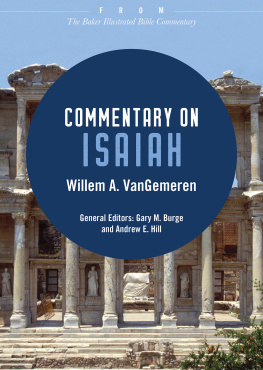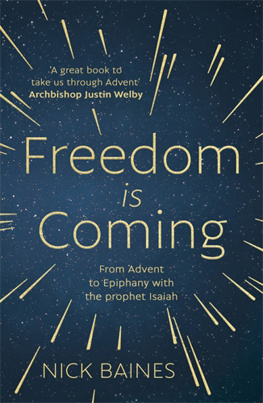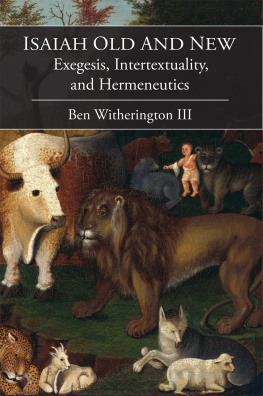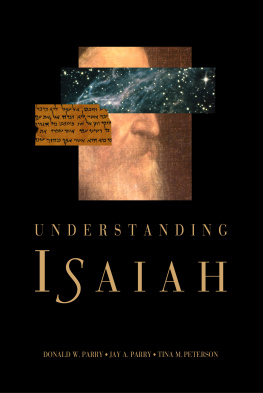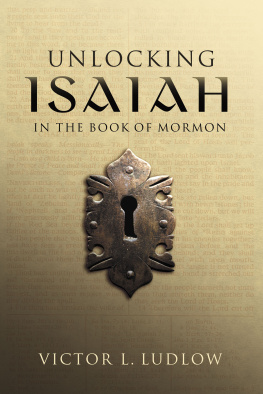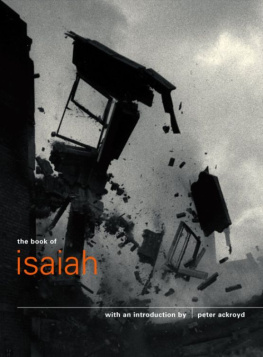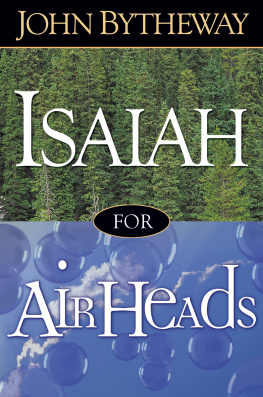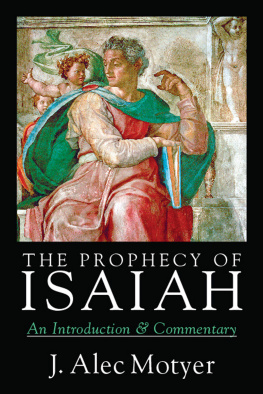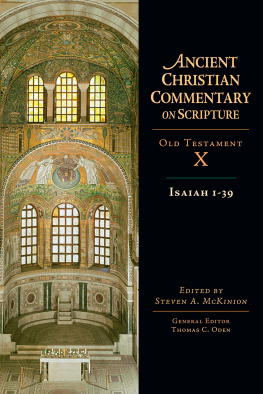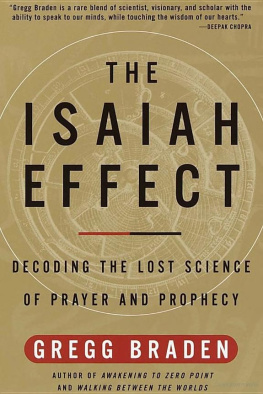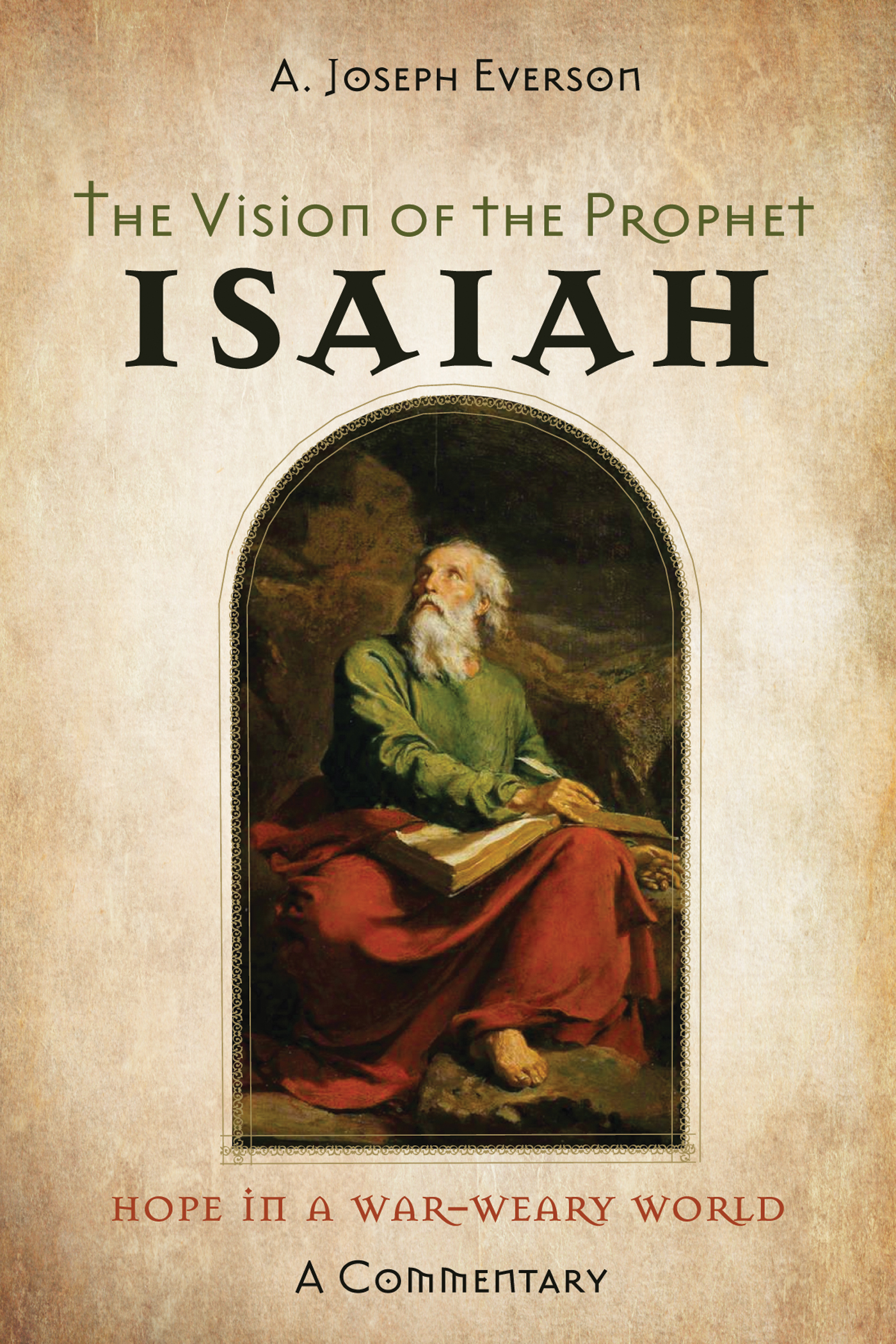Preface
An Invitation to Walk
T he scroll of Isaiah is the first of the prophetic books. In the Christian Bible, following the lead of St. Jerome and the Latin Vulgate tradition at about CE, the prophetic books were placed at the end of the Old Testament after the books of the Torah and the Writings. This was done consciously to emphasize the motifs of promise and future hope in anticipation of the New Testament. But in the original Hebrew Bible, the prophetic books follow directly after the five books of the Torah (the Pentateuch). In many ways that placement helps us understand that Isaiah and the other prophetic books were primarily commentaries on the Torah and other earlier Biblical writings, offering critique and comment on how people of faith in later eras should live.
A primary thesis of this study is that we can understand the message of the Isaiah scroll in a much clearer way when we view it from the post-exilic era when it was edited and shaped as a unified collection of poetry. In that era, those who edited the scroll were clearly aware of three momentous past events: ) the destruction of Jerusalem in BCE and the subsequent era of exile and Babylonian captivity; ) the death of Nebuchadnezzar and the fall of the Babylonian empire and ) the rise of Cyrus and the empire of Persia that made possible the return of exiles to Jerusalem and Judah. (See the discussion in section F. The Post-Exilic Setting). Those events helped to give shape to the Isaiah scroll.
It was during the post-exilic era that the Isaiah scroll was set apart as canonical or sacred writing. From that era, the prophetic message comes into focus as a theological commentary on past history, and in particular, on the three-hundred-year period from the era of the prophet Isaiah in the eighth century BCE ( to BCE) to the era of the post-exilic community ( to BCE). The view in this study is in retrospect, looking back from the post-exilic era and recalling both the prophetic warnings and the words of hope first proclaimed by the prophet. The scroll honors the memory of the vision first set forth by Isaiah ben Amoz. In the latter chapters of Isaiah, the audience is addressed as servants of the Lord. They were ordinary people who were called to live with righteousness and justice, showing particular concern for the poor, the needy, and the oppressed. Later generations of people who hear the words of this scroll are also summoned to the same tasks, and to live with courage, compassion, and hope.
. The abbreviation CE stands for common era; the abbreviation BCE stands for before the common era.
Acknowledgements
T his work is dedicated to the Minnesota Isaiah Group, ninety congregations acting together to achieve social, economic, and racial justice, and to other similar social action groups throughout the world, who see their task as living out the vision of the prophet Isaiah.
During the summer of 1976 , I had the privilege of directing the summer graduate program in Israel for St. Johns University, Collegeville, Minnesota. We were a group that included fourteen Catholic sisters, four priests, my wife Susan, and our three children, Paul, Phil and Sarah. We lived together at a monastery at Ein Kerem, just outside of Jerusalem, and for six weeks we studied the scroll of Isaiah. A highlight of that summer seminar was a trip to Mt. Sinai where we stayed overnight at the historic monastery, St. Katerinia. We were up at dawn to climb the mountain and return before the afternoon heat. The journey through the Sinai wilderness was also memorable. I have been very thankful for the trust that St. Johns placed in me that summer.
Now, more than forty years later, I look back on courses on Isaiah with students at Luther College in Decorah, Iowa, at United Seminary in New Brighton, Minnesota, at the St. Paul Seminary of St. Thomas University in St. Paul, and at California Lutheran University in Thousand Oaks, California, where I served on the religion department faculty for twenty-two years.
In California, I want to thank CLU President Chris Kimball, Provost Leanne Neilson, Rabbi Belle Michael, Bishops Guy Erwin and Howie Wennes, and Pastors Jeremy Kays, Steve Herder and Ken Caudill. In Minnesota, I express special thanks to Hal Dragseth, Lee Snook, Calvin Roetzel, James Limburg, Phil Eaves and Scott Tunseth. For discussions over the years with members of the Formation of Isaiah Group of the Society of Biblical Literature, I express thanks to Hyun Chul Paul Kim, Gary Stansell, Chris Franke, Marv Sweeney, Roy Melugin and Rolf Rendtorff.
As I reflect on this writing project, I am aware of how deeply indebted I am to a number of excellent teachers that I have had over the years: John Victor Halvorson at Luther Seminary, St. Paul, Minnesota; Gerhard von Rad and Claus Westerman at the University in Heidelberg, West Germany; and John Bright, James Mays and Patrick D. Miller at Union Seminary in Richmond, Virginia.
I also say a very special word of thanks to my wife, Susan Corey, for her help with this project.
A. Joseph Everson
California Lutheran University
Thousand Oaks, California
everson@callutheran.edu
Introductory Essays
Academic Study of the Isaiah Scroll
T hroughout most of the past century, study of the book of Isaiah has been deeply influenced by the work of Theodore H. Robinson. In 1927, he described the development of prophetic literature in terms of three stages. First, there were small independent oracles collected and preserved by disciples of a prophet. Later, disciples gathered the individual oracles into collections, adding new material and arranging them into new thematic patterns. Still later these collections were reorganized and expanded into what today is commonly called the final form of the text. Much of twentieth-century research focused on Robinsons first stage, attempting to discover the words of the original prophet. Especially in chapters , scholars have attempted in various ways to discern the authentic words of the prophet. But with this approach, critical judgments must be made about what can be deemed to be authentic and what is judged to be later redactional or added material. Far too often the later redactional material comes to be understood as being of secondary importance. The principal quest has been to discover what might have been the actual message of Isaiah ben Amoz.
This approach has been very influential throughout much of the past century. The Isaiah scroll has come to be understood in terms of three distinct parts: Proto or First Isaiah, Deutero or Second Isaiah and Trito or Third Isaiah. Already in 1892 , Bernhard Duhm proposed that the Isaiah scroll contained the work of writers in three distinct eras of history: First Isaiah (chapters ), to be interpreted in the pre-exilic eighth-century BCE setting when the prophet Isaiah ben Amoz lived; Second Isaiah (chapters ), to be interpreted against the background of the exilic era ( BCE); and Third Isaiah (chapters ), to be interpreted from the post-exilic era. Generations of pastors, priests, and even a number of rabbis have studied and learned to understand Isaiah in this way. This understanding remains so widespread today that new separate volumes continue to be published on each section of the scroll and seminary catalogs continue to list separate courses on First, Second, and Third Isaiah.


